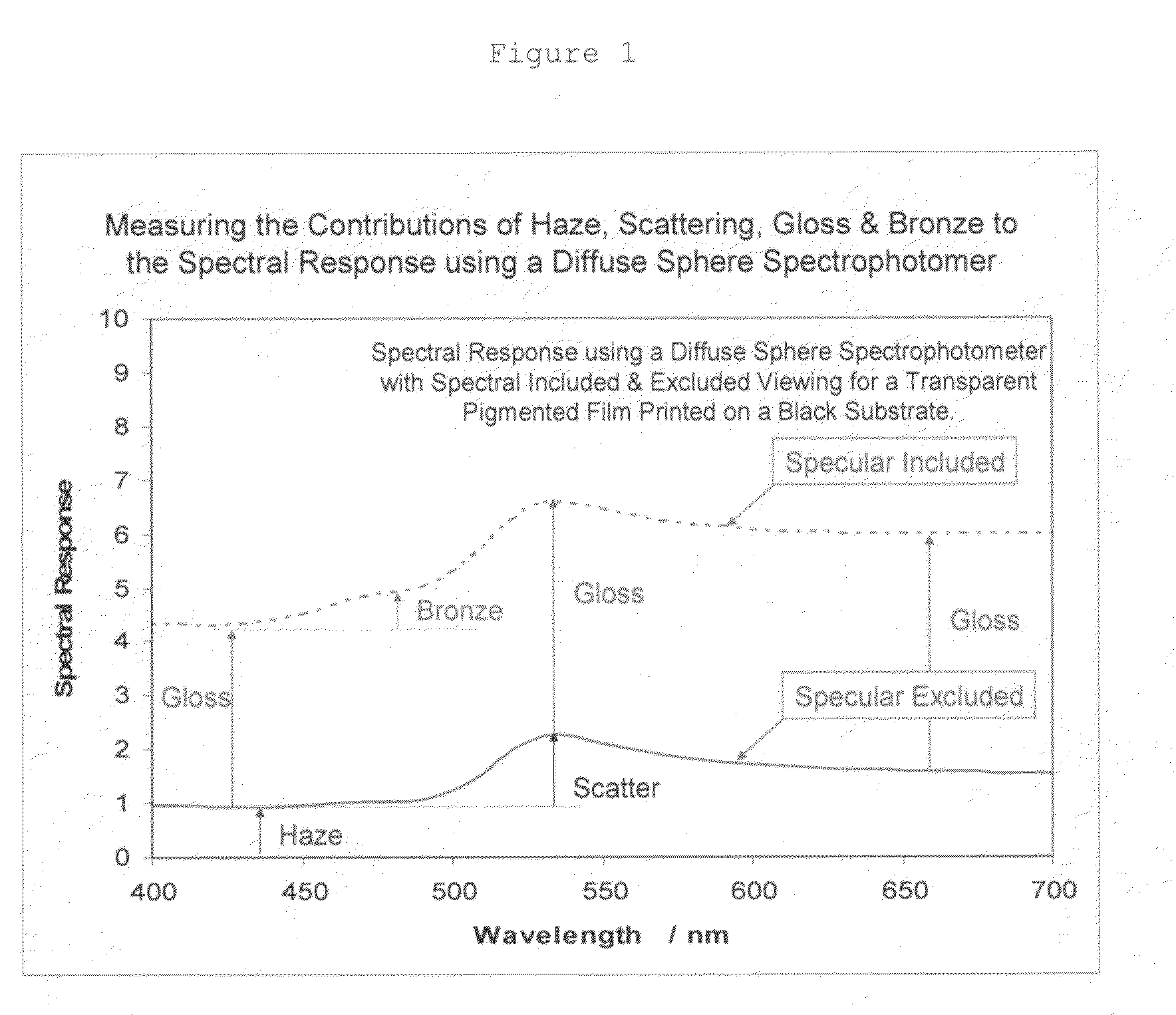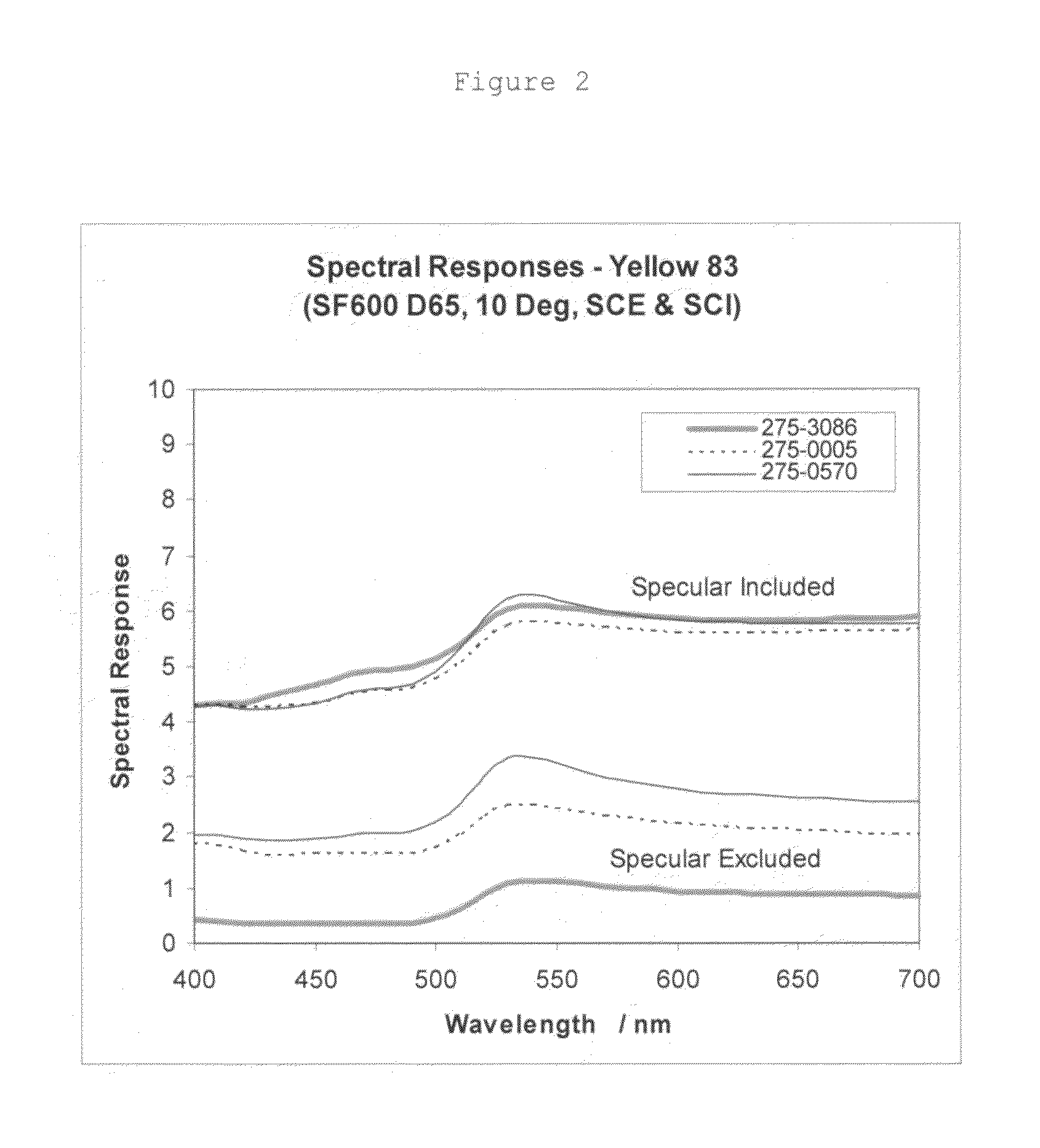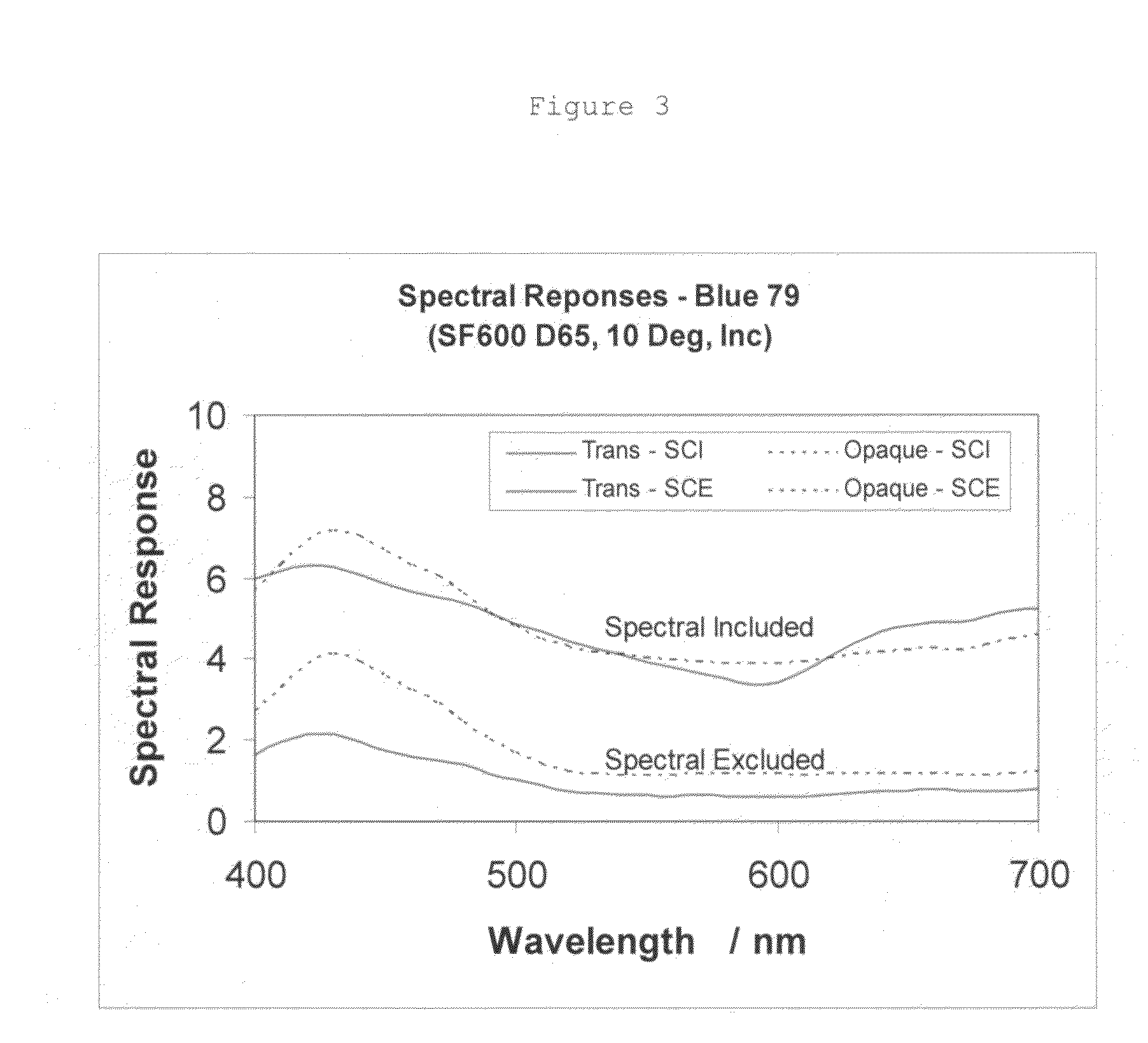Method, Apparatus and System for Measuring the Transparency of Film
a technology of transparency and film, applied in the direction of optical radiation measurement, instruments, spectrometry/spectrophotometry/monochromators, etc., can solve the problem of not providing a means for determining the source of the change in transparency
- Summary
- Abstract
- Description
- Claims
- Application Information
AI Technical Summary
Problems solved by technology
Method used
Image
Examples
example 1
Comparison of Three Transparent Yellow Pigmented Films
[0059]Three nitrocellulose packaging gravure inks were evaluated on a Form 2A—Opacity stock from The Leneta Company. The inks were prepared from three C.I. Pigment Yellow 83 pigments, 275-0005, 275-3086 & 275-0570, from Sun Chemical Corporation. The spectral excluded and spectral included responses are measured on a Datacolor Spectraflash and the Haze, Scatter, Gloss and Bronze values determined. The spectral included and spectral excluded responses of the three yellow 83 pigments are plotted in FIG. 2 and shown in Tables 1 and 2 below.
TABLE 1The Specular Excluded Spectral Response for three C.I.Yellow 83 Pigment inks: 275-0005, 275-3086 and 275-0570.Wavelength275-3086275-0005275-05704000.421.81.954100.41.741.964200.381.661.884300.371.61.864400.361.61.864500.361.611.884600.361.611.924700.371.621.994800.361.6224900.381.632.035000.461.712.185100.641.962.535200.892.283.025301.092.473.335401.142.493.355501.132.433.245601.082.353.1157...
example 2
Comparison of Transparent and Semi-Opaque Blue Pigmented Films
[0061]Two water based flexo inks were evaluated on a Form 9A —Opacity Display stock from The Leneta Company. The inks were prepared from a transparent and a semi-opaque version of C.I. Pigment Blue 79. The spectral excluded and spectral included responses were measured on a Datacolor Spectraflash SF600 and the Haze, Scatter, Gloss and Bronze values determined. The spectral included and spectral excluded responses of the three yellow 83 pigments are plotted in FIG. 3 and shown in Table 4 below.
TABLE 4The Specular Included and Specular Excluded SpectralResponse for the transparent and the semi-opaque version of C.I.Pigment Blue 79 inks.Trans -Semi-Opaque -Semi-Opaque -WavelengthSCISCITrans - SCESCE4005.965.721.622.714106.196.331.953.294206.36.922.143.894306.247.142.144.114406.077.021.953.914505.836.641.753.544605.656.321.613.234705.536.031.512.894805.365.611.382.454905.135.161.192.015004.884.81.041.665104.654.50.891.45204.4...
example 3
Comparison of Three Yellow Films of Varying Transparency
[0063]Three water based flexo inks were evaluated on a Form 2A—Opacity stock from The Leneta Company. The inks were prepared from three samples of C.I. Pigment Yellow 14 from Sun Chemical Corporation; 274-1788, 274-0033 & 474-4055. The spectral excluded and spectral included responses were measured on a Datacolor Spectraflash SF600 and the Haze, Scatter, Gloss and Bronze values determined. The spectral included and spectral excluded responses of the three C.I. Pigment Yellow 14 are plotted in FIG. 4 and shown in Table 6 below.
TABLE 6The Specular Included and Specular Excluded SpectralResponse for the three C.I. Pigment Yellow 14 inks from Sun ChemicalCorporation; 274-1788, 274-0033 and 474-4055.274-474-Wave-274-17880033474-4055274-1788274-00334055length(SCE)(SCE)(SCE)(SCI)(SCI)(SCI)4003.085.036.354.615.876.684103.124.956.374.735.876.74203.084.776.194.815.736.534303.154.676.064.985.676.434403.34.646.015.215.66.364503.44.515.775....
PUM
 Login to View More
Login to View More Abstract
Description
Claims
Application Information
 Login to View More
Login to View More - R&D
- Intellectual Property
- Life Sciences
- Materials
- Tech Scout
- Unparalleled Data Quality
- Higher Quality Content
- 60% Fewer Hallucinations
Browse by: Latest US Patents, China's latest patents, Technical Efficacy Thesaurus, Application Domain, Technology Topic, Popular Technical Reports.
© 2025 PatSnap. All rights reserved.Legal|Privacy policy|Modern Slavery Act Transparency Statement|Sitemap|About US| Contact US: help@patsnap.com



